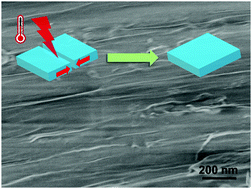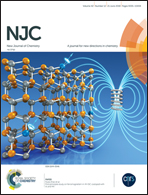Graphene-assisted fabrication of poly(ε-caprolactone)-based nanocomposites with high mechanical properties and self-healing functionality
Abstract
Herein, high-performance and self-healing poly(ε-caprolactone) (PCL) nanocomposites were fabricated using polydopamine-capped reduced graphene oxide (PDG) as a nanofiller with the aid of fold-thermal compression (termed “mechanical annealing”) cycle effect. To improve the dispersion and interfacial interactions between the PDG nanosheets and PCL matrix, PCL chains were first grafted on PDG nanosheets by ring-opening polymerization of ε-caprolactone. Notably, superior mechanical performances were successfully achieved by tailoring the periodic mechanical annealing process. The tensile strength of the PCL nanocomposite reaches up to 41.6 MPa, and the yield strength is as high as 22.7 MPa after 10 cycles of mechanical annealing, which are 2.4 and 2.6 times higher than those of pure PCL, respectively. Moreover, the photothermal conversion ability of polydopamine endowed the nanocomposite with self-healing functionality. The temperature of nanocomposites can rapidly surpass the melting temperature of the polymer upon exposure to near-infrared (NIR) light and thus allows fast NIR light-induced self-healing and recovery of the mechanical properties of the nanocomposites; this finding provides a facile method to obtain and explore new graphene-based NIR light-induced self-healing nanocomposites.



 Please wait while we load your content...
Please wait while we load your content...